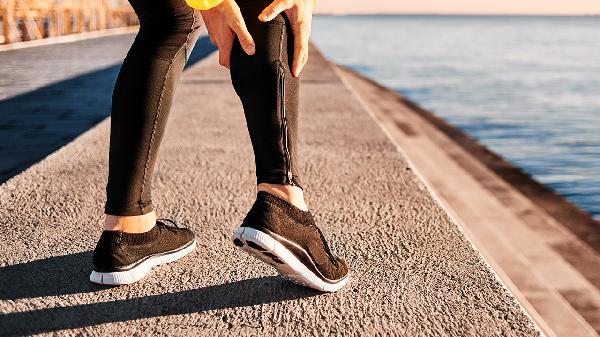Stamina is the secret sauce that keeps runners going when their legs feel like jelly and their lungs are on fire. It's not just about logging miles—though that definitely helps—but about building a body and mind that can handle the grind without crumbling. Whether you're training for your first 5K or eyeing an ultramarathon, understanding how to boost stamina effectively can mean the difference between hitting the wall and cruising past the finish line with gas left in the tank.
The Science Behind Running Stamina
Stamina isn’t just a vague concept—it’s rooted in physiology. When you run, your body relies on two primary energy systems: aerobic (with oxygen) and anaerobic (without oxygen). The aerobic system kicks in during steady-state runs, using oxygen to convert carbs and fats into fuel. The longer you train this system, the more efficiently your body delivers oxygen to working muscles, delays fatigue, and clears lactic acid. That’s why seasoned runners can maintain a conversational pace for hours while beginners gasp after a mile. Anaerobic capacity, on the other hand, helps with short bursts of speed but drains quickly. Balancing both systems through varied training is key to unlocking next-level endurance.
Mileage Matters, But Smartly
Yes, running more builds stamina—but piling on miles recklessly invites injury. The golden rule? Increase weekly distance by no more than 10% to let tendons and muscles adapt. Mix long slow runs (where you can chat easily) with tempo runs (comfortably hard pace) to stress different energy systems. Ever heard of the "80/20 rule"? Elite runners spend 80% of training at low intensity to build aerobic base and 20% at high intensity to sharpen speed. This balance prevents burnout while steadily boosting stamina. And don’t skip recovery weeks! Dropping mileage every 3-4 weeks lets your body supercharge adaptations.
Cross-Training: The Stamina Game-Changer
Think cycling, swimming, or rowing are just for injured runners? Think again. Low-impact cross-training builds cardiovascular fitness without pounding joints, making it perfect for active recovery days. Pool running, for instance, mimics the running motion while eliminating impact—studies show it maintains VO2 max nearly as well as land running. Strength training is another stamina powerhouse: exercises like deadlifts and lunges fortify muscles that stabilize your stride, letting you maintain form when fatigue hits. Even yoga counts—improved flexibility and breathing efficiency translate directly to running economy.
Fueling the Engine
Ever bonked mid-run? That’s your body screaming for fuel. Carbohydrates are your premium gas—they glycogen-load muscles for endurance efforts. But don’t neglect protein (repairs muscle microtears) and healthy fats (long-term energy). Hydration is equally crucial: just 2% dehydration can tank performance. For runs over 60 minutes, sip electrolytes to replace sodium lost in sweat. Post-run, the 30-minute "recovery window" is prime time to refuel with a 3:1 carb-to-protein ratio—chocolate milk isn’t just tasty, it’s science-approved!
Mental Grit: The Invisible Stamina Booster
When your legs want to quit, your mind keeps you moving. Mental stamina separates finishers from DNFs. Techniques like positive self-talk ("I’ve trained for this"), breaking races into chunks ("Just get to the next mile marker"), and visualization (imagining strong strides) rewire your brain to handle discomfort. Meditation apps can train focus, while running without music teaches you to sit with fatigue. Remember, every runner hits rough patches—those who push through gain mental calluses that make future efforts feel easier.
Sleep: The Silent Stamina Builder
Skimping on sleep sabotages stamina more than skipping a workout. During deep sleep, growth hormone repairs muscle damage, and your brain consolidates motor skills (like efficient running form). Chronic sleep deprivation raises cortisol, hampering recovery and increasing injury risk. Aim for 7-9 hours nightly, and consider 20-minute power naps after hard sessions. Pro tip: Cool, dark bedrooms and avoiding screens before bed enhance sleep quality, letting you wake up ready to crush another training day.
Gear That Goes the Distance
The right shoes can make or break stamina. Cushioned models like the UA Charged Rogue 2 reduce impact stress, preserving energy over miles. Rotate between two pairs to vary stress patterns on legs. Moisture-wicking clothes prevent chafing disasters mid-run, while anti-blister socks save your feet during long efforts. Even small upgrades matter: a lightweight hydration vest beats carrying a sloshing water bottle, and GPS watches help pace evenly to avoid early burnout. Remember, comfort equals conserved energy.
Building stamina isn’t about heroic single workouts—it’s the cumulative effect of consistent training, recovery, and smart choices. Whether you’re chasing a PR or just want to enjoy running farther without misery, these strategies stack the deck in your favor. The road to endurance is paved with patience, but every step forward makes the next mile easier. Now lace up, hit the pavement, and let your stamina surprise you.
























